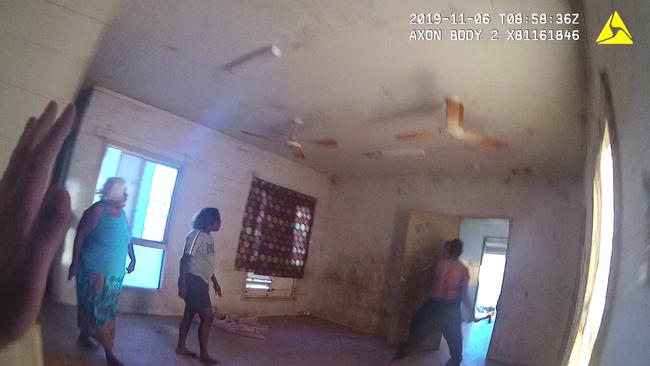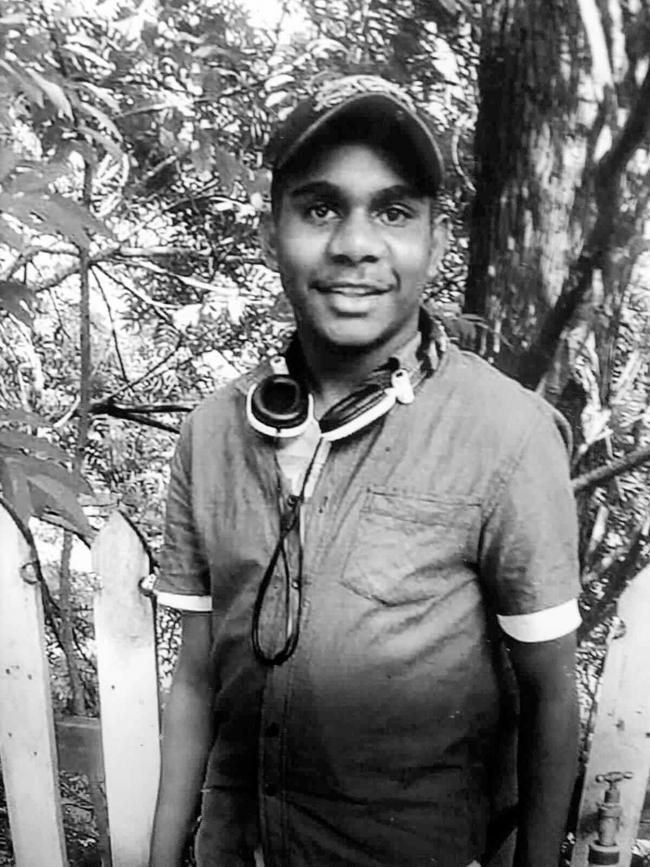How the use of force went wrong at Yuendumu
After the tragic saga of Kumanjayi Walker and Zachary Rolfe, a senior NT policeman said he hoped the inquest would be scathing, ‘because we need it’.

In an unguarded moment not long after the tragic saga of Kumanjayi Walker and Zachary Rolfe began to unfold, a senior Northern Territory policeman remarked that he hoped the upcoming coronial inquest into Walker’s death would be scathing, “because we need it”.
He knew that the force had messed up.
Now Constable Rolfe’s trial is over, we know he did not murder Walker when he shot the Aboriginal teenager three times, twice at close range while he was at least partially restrained on the floor. Doing so was legally justifiable in the context of Rolfe’s job.
But whatever task Rolfe and his police Immediate Response Team colleagues thought that they were carrying out in Yuendumu on November 9, 2019, it is also clear from the evidence in his trial that they were not executing the operation that senior officers intended.
The IRT members’ understanding of police teachings about the use of force differed from that of an expert trainer, whose views were also different from and strongly criticised by another former cop who apparently designed the training system.
The team’s chorus of “I can’t recall” in sworn testimony about events leading up to Walker’s death did not inspire confidence in them, or in police culture.
The IRT has been suspended since June 2020, pending the outcome of a now-lengthy review.
The only documentary evidence about the plan the IRT was meant to be following envisaged them conducting random breath-tests and high-visibility patrols before surprising Walker at dawn on Sunday with a dog handler and someone who knew him well.
Video footage showed the IRT instead going from house to house at dusk on Saturday – in the hours after Walker’s grandfather’s funeral – “clearing” family homes with hands on their weapons and carrying a beanbag shotgun and an AR-15 rifle. One of 10 police standard operating principles is that the success of an operation will be judged by the extent to which the use of force is minimised. Officers are trained to avoid violent confrontations wherever possible. Everyone involved in the shooting knew Walker could be dangerous. Yet none of the IRT members discussed what they would do if they found him or if he turned violent or produced a weapon. Rolfe and his partner encountered Walker at close quarters, in a tight space with poor lighting and one exit.
From that moment it was likely that someone would be hurt if things went wrong.
A coronial inquest due to get under way in September will examine how Rolfe and his partner came to be in an avoidable physical confrontation with Walker. Stopping officers from getting – by dint of poor judgment or misdirection – into dangerous situations is part of protecting frontline police and the community. That was the candidly speaking senior policeman’s point: the force had arguably failed at both objectives.
Much has been made of an incident three days before Walker’s death in which he brandished an axe at two Yuendumu-based constables. The encounter was confronting but not necessarily unusual. Dave Price, husband of Warlpiri woman and former NT politician Bess Price, says picking up lethal weapons in Yuendumu is “absolutely bloody standard … it’s difficult to think of anyone who has spent much time there who hasn’t been physically threatened with something”. Walker had a history of violence, including shocking assaults on his girlfriend. That, sadly, is also not unusual in places such as Yuendumu, where the consequences of disadvantage, substance abuse and parental neglect tend to pass from one generation to the next.
The officers involved in the “axe incident” told the NT Supreme Court they “froze” and were frightened but did not believe Walker “wanted to chop us”.


They characterised Walker’s behaviour as a Warlpiri show of strength, “trying to impress upon their family that they’re a strong person”. Relatives said Walker just wanted to escape and knew afterwards he had done the wrong thing and needed to be arrested.
Rolfe, who had never been to Yuendumu, saw things differently. He criticised the local officers’ actions based solely on viewing their body-worn videos and agitated with superiors for the IRT to be deployed to track down Walker.
The coronial inquest is expected to examine community policing models and Rolfe’s history of interactions with arrest targets, including a series of complaints about allegedly excessive use of force.
Rolfe has claimed in an interview with this newspaper that each of the incidents was investigated, and he was cleared. Sources have said it’s unclear whether all of Rolfe’s disciplinary proceedings had resolved by the time Walker was shot. It emerged after Rolfe’s murder trial that a magistrate once found he falsified an injury and lied under oath to justify punching an Aboriginal man in the face. Documents showed police briefly contemplated charging Rolfe with perjury. One question the coronial inquest is likely to consider is whether internal police complaints procedures were disrupted because Rolfe was liked by his superiors.
The inquest will look at Walker’s interactions with police and what to do when community-based staff such as nurses feel unsafe. It probably will not go deeply into his upbringing or dealings with other services unless those directly relate to his death.
The inquest may disappoint some by not venturing far into the reasons Rolfe was charged. It is also unlikely to tackle the fairness of the criminal justice system and the scope of legal defences available to serving police. Coronial jurisdiction is mainly designed to help identify systemic failings that contribute to deaths.
Outside court, after Rolfe’s not guilty verdict, representatives of Yuendumu and of Walker’s family complained that the trial was unjust partly because none of the jurors was obviously Aboriginal. The NT government has committed to changing rules limiting jury pools to people residing in Greater Darwin and Alice Springs. It remains to be seen what practical effect that will have as other rules about language and literacy will still likely preclude many remote residents from participating.

Before Rolfe faced a jury, the High Court helped decide what defences he could use. As well as the defences of self-defence and acting reasonably in the course of duties, NT legislation permits serving police officers an extra, broad immunity from civil or criminal liability where they are found to be acting in good faith while exercising police powers or performing police functions.
The law was proposed by an opposition ex-policeman turned politician and initially intended only to apply to civil liability. It was taken up and expanded by then NT attorney-general Paul Henderson, who became chief minister at a time when Labor and the Country Liberals were competing for suburban swing votes by appearing tough on crime.
Aboriginal interests are often said to fall victim to this peculiarity of the NT electoral system.
The practical effect of these defences was, as Justice John Burns explained in his summing up, that it mattered less whether Rolfe was following orders or adhering to training, or indeed whether Walker could realistically harm anyone once he was somewhat pinned down, than it did what Rolfe perceived when he fired the fatal shots.
To convict Rolfe of any of three alleged offences, the jury would have needed to be certain beyond reasonable doubt that he did not “hold an honest belief” firing the shots was necessary, that doing so was unreasonable “in the circumstances as (he) perceived them to be” and that he did not “honestly believe” he was exercising police powers or functions.
In other words, the 12 jurors would have needed to be unanimously confident they knew better what was in his head than he said he did under oath.
Activists and some lawyers say these defences are too broad, and it is practically impossible to convict serving NT police of serious crimes. Whether or not that is true, the coronial inquest can only point to such questions, and Territory politicians are unlikely to risk angering suburban voters and frontline officers by contemplating reforms in the absence of sustained public pressure or something like a royal commission.








To join the conversation, please log in. Don't have an account? Register
Join the conversation, you are commenting as Logout